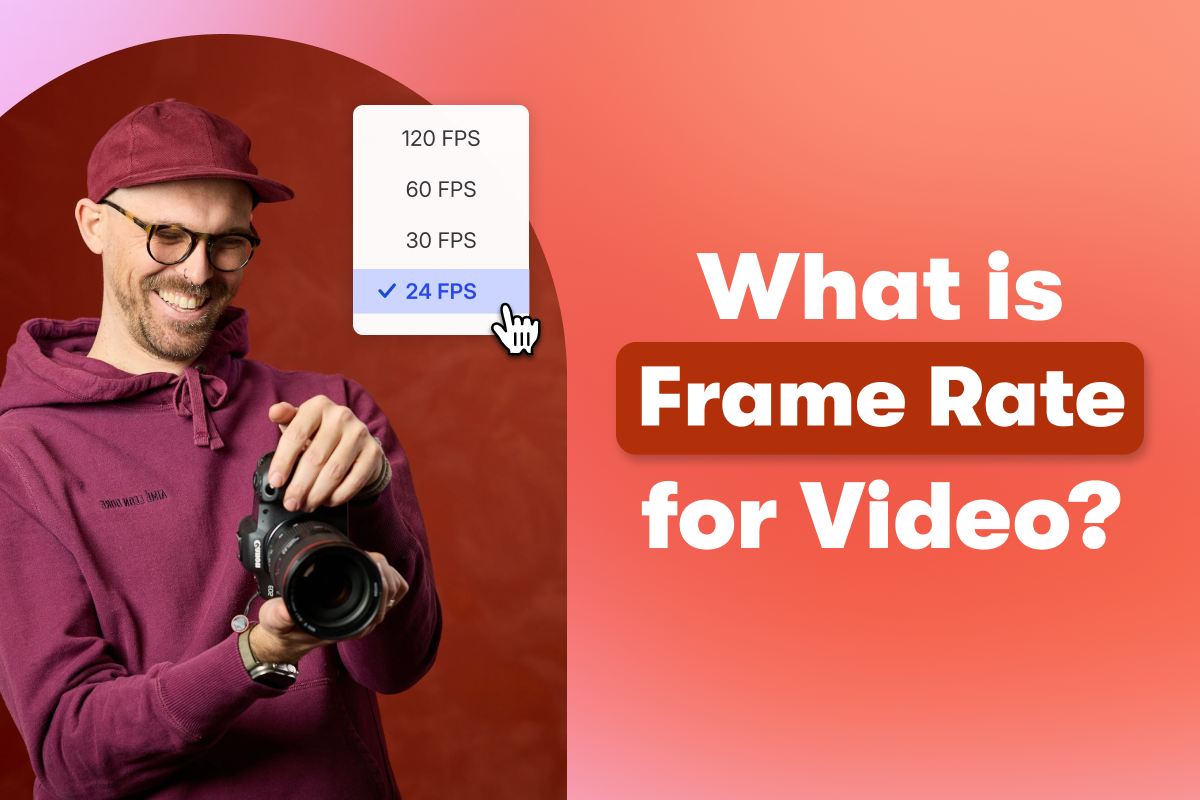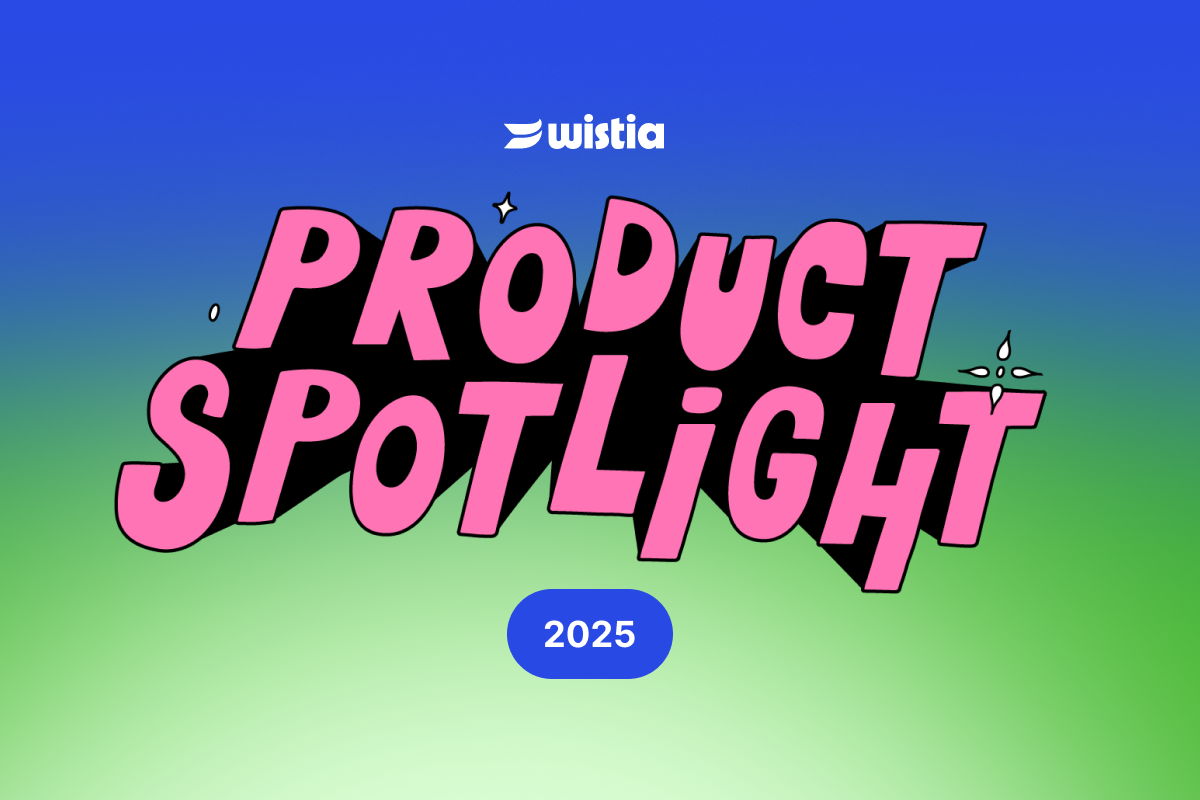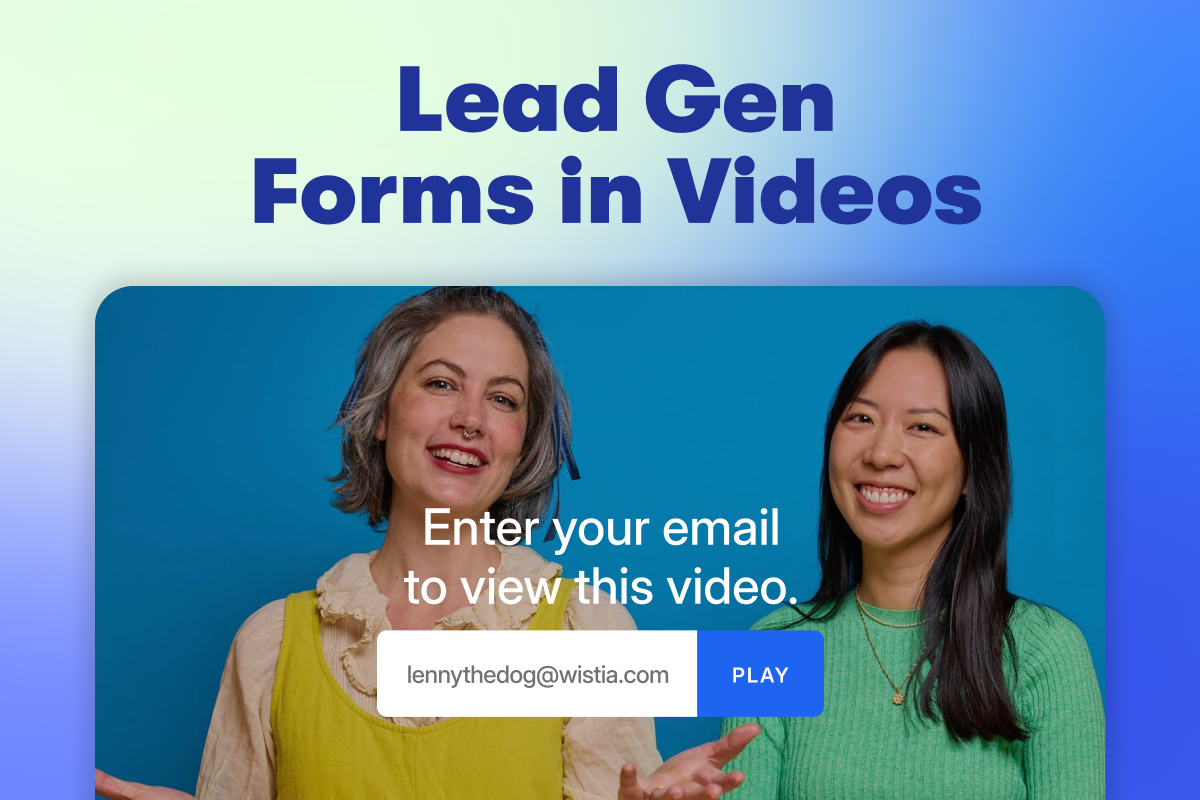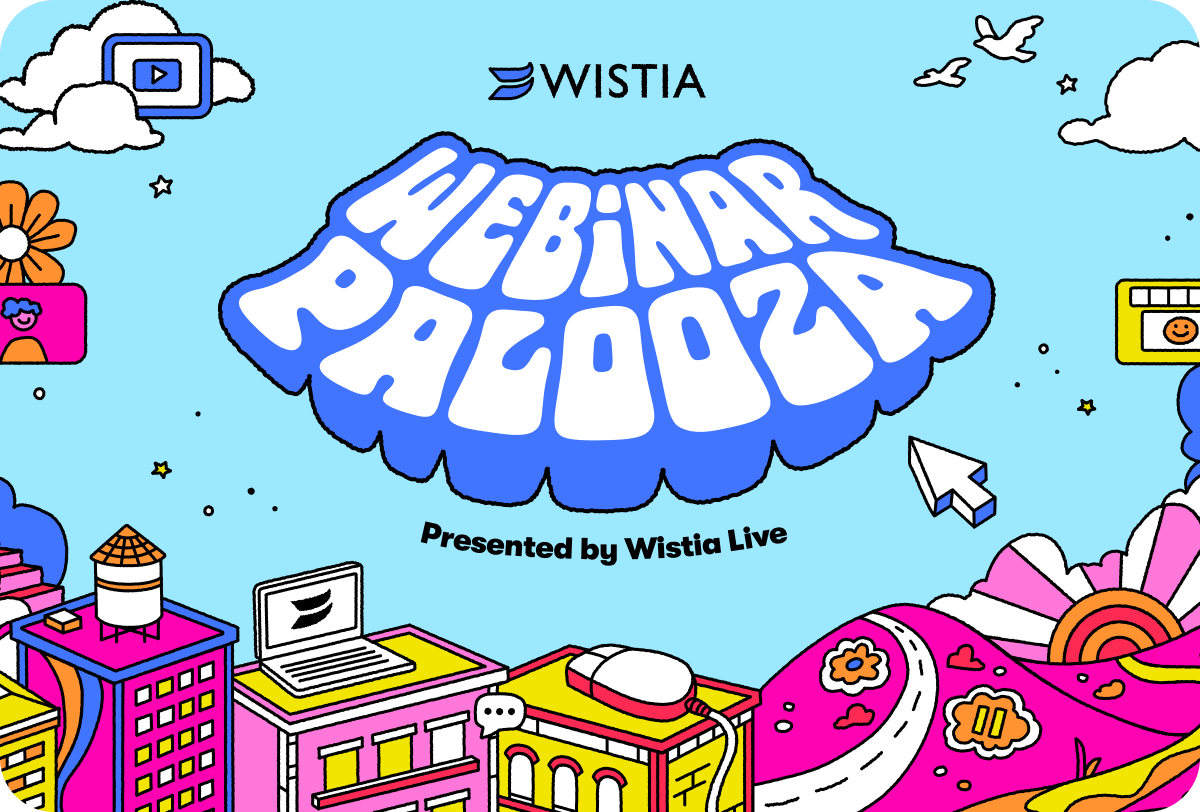5 Ways to Make Better Marketing Videos with Psychology
January 13, 2021
Topic tags
I hear that Slack notification you just got. I see your phone sitting next to your keyboard, buzzing with new texts. It’s okay; I won’t be offended if you check.
People are being pulled away all the time, and it’s all too easy to bounce if we get bored. In order for your audience to hear you — and listen — you have to create something they’ll pay attention to despite the distractions.
Videos are one of the best ways to grab your audience’s attention, but they come with a non-negotiable time commitment. You need to convince people to give up a predetermined amount of their own valuable time. To keep them watching, it pays to understand what gets people’s attention on a psychological level.
Let’s take a look at a few basic psychology principles that you can use to make more engaging marketing videos.
1. Catch viewers’ eyes with color
Different colors evoke different feelings, and some are better at grabbing people’s attention. By understanding the basics of color theory, you can capture attention and invoke specific emotions with your video content.
In a classic study on color, Satyendra Singh determined that it takes a mere 90 seconds for a customer to form an opinion about a product. And, 62–90 percent of that interaction is determined by the color of the product alone.
How do these associations work? Well, red is often associated with power, energy, and anger. Blue conveys a sense of trust and security. Yellow suggests caution. Black indicates luxury and exclusivity.
But of course, color theory isn’t as black and white as it may seem; contrast, vibrancy, shade, and context can all alter the look and feel of your video and your message. For example, the color red can convey love and passion in a Valentine’s Day ad while also sending a very different message in a political ad campaign.
But in general, it’s essential to be mindful of color associations and to match the look and feel of your video with a color palette that captures attention and invokes strong feelings.
“It’s important to be mindful of color associations and to match the look and feel of your video with a color palette that captures attention and invokes strong feelings.”
Sticking with the red example, let’s explore how McDonald’s uses this color in their marketing. As noted above, red is often associated with energy, passion, and activity. Studies even suggest that the color red can increase blood pressure and heart rate. And, it is widely believed that red stimulates appetite, which might explain why many fast-food brands, including McDonald’s, rely heavily on this color throughout their visuals.
Consider different color schemes and how something as simple as a wardrobe or background change can completely alter the tone and mood of your video. Use color wisely to create the strongest and most immediate reaction in viewers.
2. Hook viewers early with music
Sparking viewers’ curiosity isn’t enough to guarantee engagement; you need to hook them within the first few seconds to get them to stick around.
According to Facebook data, 65% of people that watch the first three seconds of your video will watch it for at least ten more seconds. And another 45% will watch an additional 20 seconds of content. People are wired to seek instant gratification, and if your video doesn’t hook them within the first few seconds, they likely won’t stick around much longer.
“65% of people that watch the first three seconds of your video will watch it for at least ten more seconds. Another 45% will watch an additional 20 seconds of content.”
One easy way to hook viewers early? Play music. No — really! As it turns out, hearing a catchy song activates the nucleus accumbens, a part of the brain responsible for rewarding you with fuzzy feelings when you eat, drink, or exercise. Happy viewers are engaged viewers, and they might just stick around longer thanks to a compelling audio story.
Take this example from the University of Phoenix. This ad tells the story of a woman who feels frustrated balancing work with school, a pain many people can relate with. But, she discovers a flexible program designed for adult learners like herself and finds a balance that works for her demanding lifestyle. The ad doesn’t use a script or formal narration and instead lets the music tell the story.
Nike is another master of music. For years, their ads have been applauded for everything from taking a stand on racial injustice to celebrating women in sports. This particular spot aired in 2020 and was praised not only for the beautifully executed imagery but also the subtle background music that helps change the energy throughout the narrative.
Marketers can take advantage of the effect that music has on your brain. Think carefully about what feelings you want to evoke for the viewer of your video, then choose the best music to make this happen and deliver it in a way that ties back to your message.
3. Use storytelling to connect with viewers
Emotions are more powerful than people give them credit for. Many people believe they make choices based on logic, but emotions actually heavily influence or even determine most of our decisions.
Your viewers will pay more attention to how you present information than to the value of what you’re saying. This is called the "framing effect." It triggers a part of your brain called the amygdala that deals with emotions and decisions — helping you decide whether or not to stick your hand into that piranha tank or even if you should wear high heels on cobblestones.
Create a narrative that shows your viewers that you know what they feel and anticipate what they want to feel. If viewers are emotionally connected to your content, they’re more likely to decide that the message is important.
“If viewers are emotionally connected to your content, they’re more likely to decide that the message is important.”
Car companies are well-known for creating connections with buyers through storytelling, and no brand does this better than Volvo. Their “Moments” ad from 2017 is masterful — but don’t take our word for it.
Did someone cut an onion in here? Just me? Volvo, known for being one of the safest car brands on the market, taps into this feeling of safety by narrating a young girl’s entire journey — which is almost cut short by a distracted driver. The final tag of “sometimes the moments that never happen matter the most” cuts right to the core of parents’ innate desire to protect their children.
Giving a viewer someone to root for is really the way to their heart. (We’re lucky to have our Wistia mascot Lenny, who makes a perfect canine protagonist for our videos.) This Intuit video, “A Giant’s Story,” achieves this same connection by putting a playful, human touch on something that might otherwise feel a bit cold — B2B accounting software.
At the end of the day, people want to connect with other people, and we often do this by sharing feelings that we have in common. In general, video is a perfect medium for sharing — but videos with emotional content are even more likely to be shared. Give your viewers a reason to share and a reason to connect.
4. Show, don’t tell with visuals
The brain can understand visual information in 13 milliseconds, and your visual system activates over 50% of your brain. Science!
Casper took a visual approach for sharing the engineering and design process behind their products. The behind-the-scenes video shows real employees walking through how the mattresses come to life and what exactly makes them oh so special. The video also incorporates animations to simplify some of the more complex or ambiguous ideas they explore, like A/B testing.
GoPro also takes a highly visual approach to their videos. The outdoor camera brand sourced user-generated content for this 2018 ad promoting a new line of cameras. Why tell folks how great their products are when they could let real customers do the “talking” by sharing their own adventures? The ad combines vibrant and energetic submissions from several participants living life to the fullest.
Spice up your videos and keep viewers engaged by adding unexpected visual elements. Even something as simple as a whiteboard can anchor your video and give viewers something compelling to look at, especially if your video relies heavily on someone talking directly to an audience.
5. Use credible video talent
Our final tip for leveraging psychology to create catchier brand videos? Use credible video talent to build trust with your audience.
Credibility refers to the amount of knowledge the communicator (aka your video talent) is assumed or perceived to have. This is why brands often leverage celebrities for cameos in their commercials.
You know and trust Matthew McConaughey, who also happens to love our car; you should buy it and be more like Matthew! And in case you’re wondering, this can actually work! Lincoln reported a 25% lift in sales after launching new ad campaigns featuring McConaughey. Alright, alright, alright.
A classic example of a trusted thought leader in video is Moz’s Whiteboard Friday series. For years, Rand Fishkin, an icon in the SEO world, led the weekly series that followed a simple but effective format — explaining complex SEO concepts via a whiteboard.
As one of the most influential leaders in the SEO world, Rand’s video series took off and put Moz on the map for digital marketing decision-makers.
How can you do the same? Leverage well-known, trusted, and likable talent for your own videos — whether that’s tapping external guests or leaning on employees.
We use this tactic at Wistia by showcasing internal thought leaders for webinars, marketing videos, and shows. For example, we put Chris Lavigne, trusted video production expert and storytelling extraordinaire, behind the lens for our (Out of) Office Hours series, which covers all things remote video and audio production.
As a video producer himself, Chris knows the industry like the back of his hand. He’s well-known in the creative community and has a strong and loyal social following that engages with his content.
Get in viewers’ heads to inspire action
At the end of the day, people want to connect with other people, and we often do this by sharing feelings in common.
Even in a world that constantly pulls our attention in many directions, you can carve out space in your viewer’s mind. Armed with your camera and a few principles of human psychology, you’ll give your video the edge that will set it apart from the distractions.
If you get your viewers to truly engage and connect with your video, you’ll grab a little bit of valuable space in their constantly-buzzing brains. This is how you’ll succeed in making viewers remember your video and take action on what you said.






